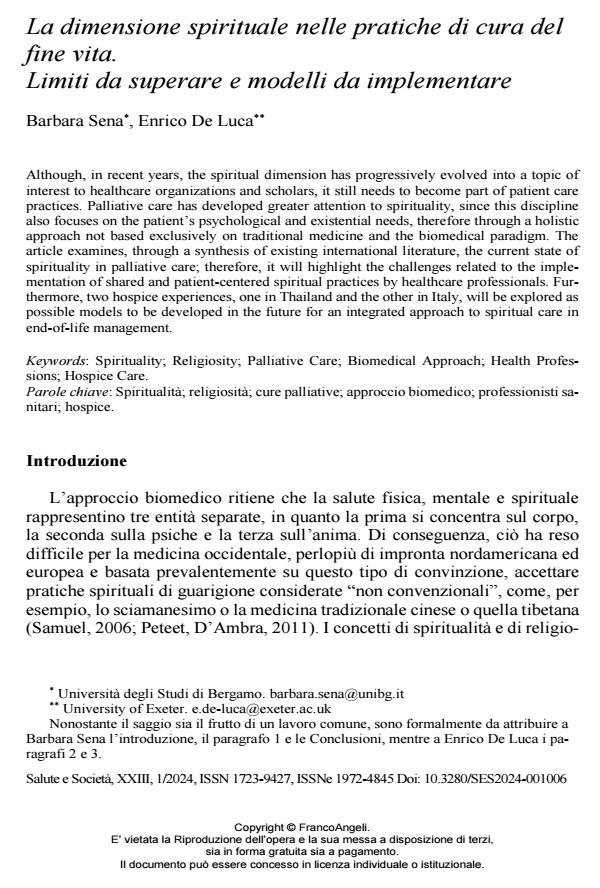La dimensione spirituale nelle pratiche di cura del fine vita. Limiti da superare e modelli da implementare
Titolo Rivista SALUTE E SOCIETÀ
Autori/Curatori Barbara Sena, Enrico De Luca
Anno di pubblicazione 2024 Fascicolo 2024/1
Lingua Italiano Numero pagine 18 P. 83-100 Dimensione file 450 KB
DOI 10.3280/SES2024-001006
Il DOI è il codice a barre della proprietà intellettuale: per saperne di più
clicca qui
Qui sotto puoi vedere in anteprima la prima pagina di questo articolo.
Se questo articolo ti interessa, lo puoi acquistare (e scaricare in formato pdf) seguendo le facili indicazioni per acquistare il download credit. Acquista Download Credits per scaricare questo Articolo in formato PDF

FrancoAngeli è membro della Publishers International Linking Association, Inc (PILA)associazione indipendente e non profit per facilitare (attraverso i servizi tecnologici implementati da CrossRef.org) l’accesso degli studiosi ai contenuti digitali nelle pubblicazioni professionali e scientifiche
Although, in recent years, the spiritual dimension has progressively evolved into a topic of interest to healthcare organizations and scholars, it still needs to become part of patient care practices. Palliative care has developed greater attention to spirituality, since this discipline also focuses on the patient’s psychological and existential needs, therefore through a holistic ap-proach not based exclusively on traditional medicine and the biomedical paradigm. The article examines, through a synthesis of existing international literature, the current state of spirituality in palliative care; therefore, it will highlight the challenges related to the implementation of shared and patient-centered spiritual practices by healthcare professionals. Furthermore, two hospice experiences, one in Thailand and the other in Italy, will be explored as possible mod-els to be developed in the future for an integrated approach to spiritual care in end-of-life man-agement.
Parole chiave:Spiritualità; religiosità; cure palliative; approccio biomedico; professionisti sanitari; hospice.
Barbara Sena, Enrico De Luca, La dimensione spirituale nelle pratiche di cura del fine vita. Limiti da superare e modelli da implementare in "SALUTE E SOCIETÀ" 1/2024, pp 83-100, DOI: 10.3280/SES2024-001006